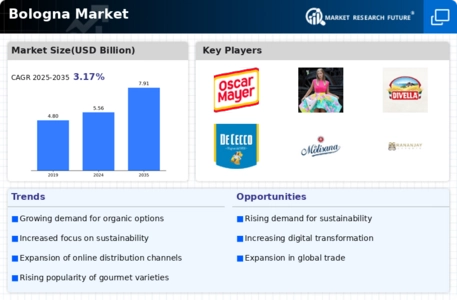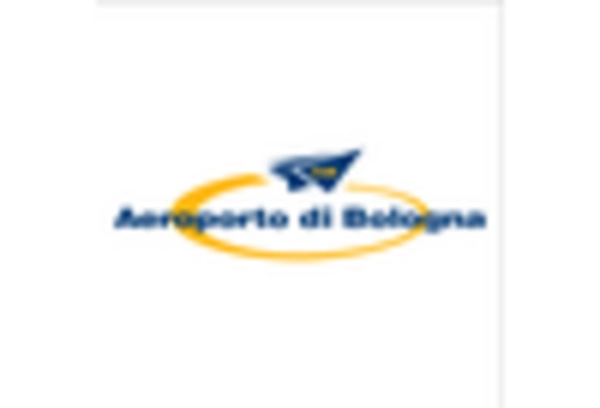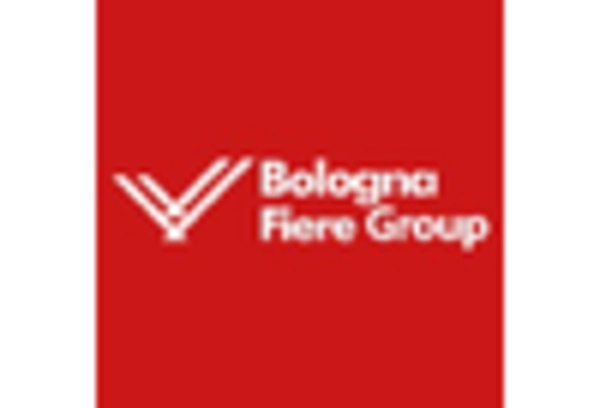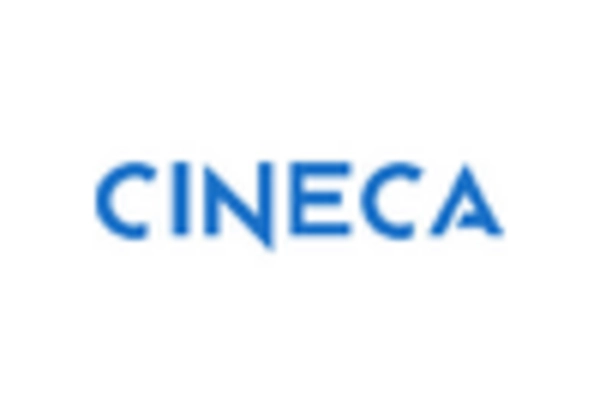Culinary Tourism Growth
The Bologna Market is benefiting from the rise of culinary tourism, which has become a significant driver of economic activity in the region. Tourists are increasingly drawn to Bologna Market for its rich gastronomic heritage, which includes traditional dishes and local delicacies. This influx of visitors not only boosts sales for local vendors but also enhances the overall market experience. Recent statistics indicate that culinary tourism contributes approximately 20% to the local economy, highlighting its importance. As more travelers seek authentic food experiences, the Bologna Market is likely to see continued growth in this sector. This trend may encourage the development of food-related events and festivals, further promoting the region's culinary offerings.
Rising Demand for Local Produce
The Bologna Market is currently experiencing a notable increase in demand for locally sourced produce. This trend is driven by consumers' growing preference for fresh, organic, and sustainable food options. In recent years, the market has seen a shift towards supporting local farmers and producers, which not only enhances the quality of food but also fosters community engagement. Data indicates that approximately 60% of consumers in Bologna Market prioritize purchasing local products, reflecting a broader movement towards sustainability. This rising demand is likely to encourage more farmers' markets and local food initiatives, thereby strengthening the Bologna Market. Furthermore, the emphasis on traceability and transparency in food sourcing is expected to continue influencing consumer choices, potentially leading to a more robust local economy.
Health-Conscious Consumer Behavior
The Bologna Market is witnessing a shift towards health-conscious consumer behavior, which is reshaping purchasing patterns. As individuals become more aware of the impact of diet on health, there is a growing preference for organic, gluten-free, and plant-based products. Recent surveys indicate that nearly 50% of consumers in Bologna Market actively seek healthier food options, which is influencing market dynamics. This trend is prompting local producers to adapt their offerings to meet the evolving demands of health-oriented consumers. Consequently, the Bologna Market is likely to see an increase in the availability of health-focused products, which may attract a diverse customer base. This shift not only reflects changing consumer preferences but also underscores the importance of health and wellness in the food industry.
Sustainability Initiatives and Regulations
The Bologna Market is increasingly influenced by sustainability initiatives and regulatory frameworks aimed at promoting environmentally friendly practices. Local governments are implementing policies that encourage sustainable agriculture and reduce food waste, which is reshaping market operations. For instance, initiatives that support organic farming and reduce plastic usage are gaining traction among consumers and producers alike. Data suggests that compliance with these regulations is becoming a competitive advantage for businesses within the Bologna Market. As sustainability continues to be a priority for consumers, it is likely that the market will see a rise in eco-friendly products and practices. This shift not only aligns with consumer values but also positions the Bologna Market as a leader in sustainable food practices.
Technological Advancements in Food Distribution
Technological innovations are playing a pivotal role in transforming the Bologna Market. The integration of advanced logistics and supply chain management systems is enhancing the efficiency of food distribution. For instance, the adoption of mobile applications for real-time inventory tracking and delivery scheduling is becoming increasingly prevalent. This shift not only streamlines operations but also improves customer satisfaction by ensuring timely access to fresh products. Moreover, data suggests that the implementation of e-commerce platforms has expanded the reach of local vendors, allowing them to tap into a broader customer base. As technology continues to evolve, it is likely to further reshape the Bologna Market, fostering greater connectivity between producers and consumers.


















Leave a Comment